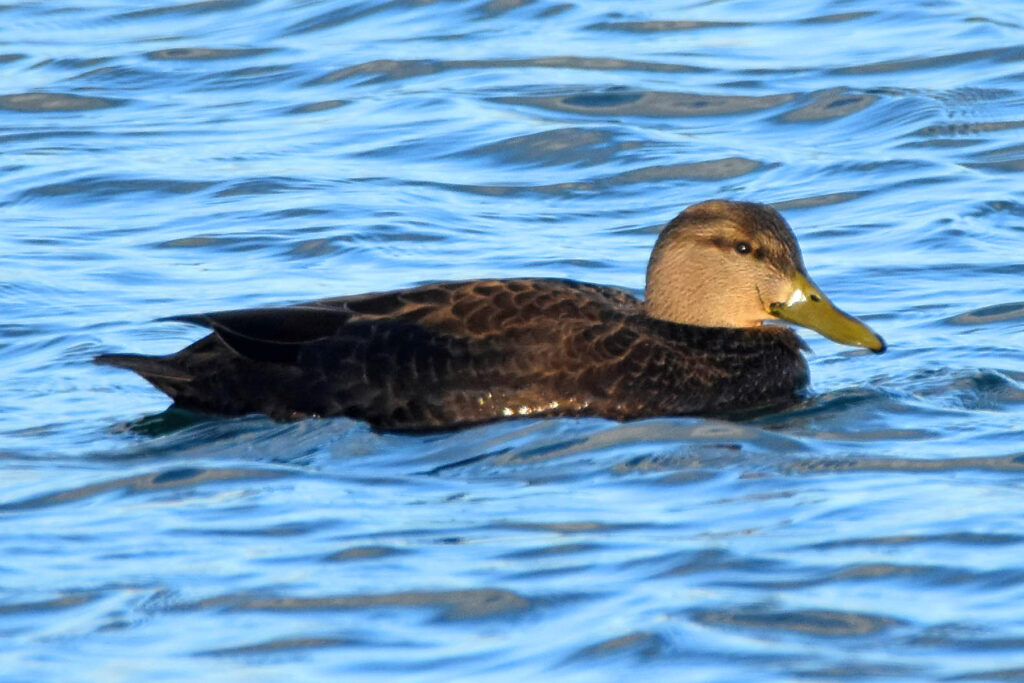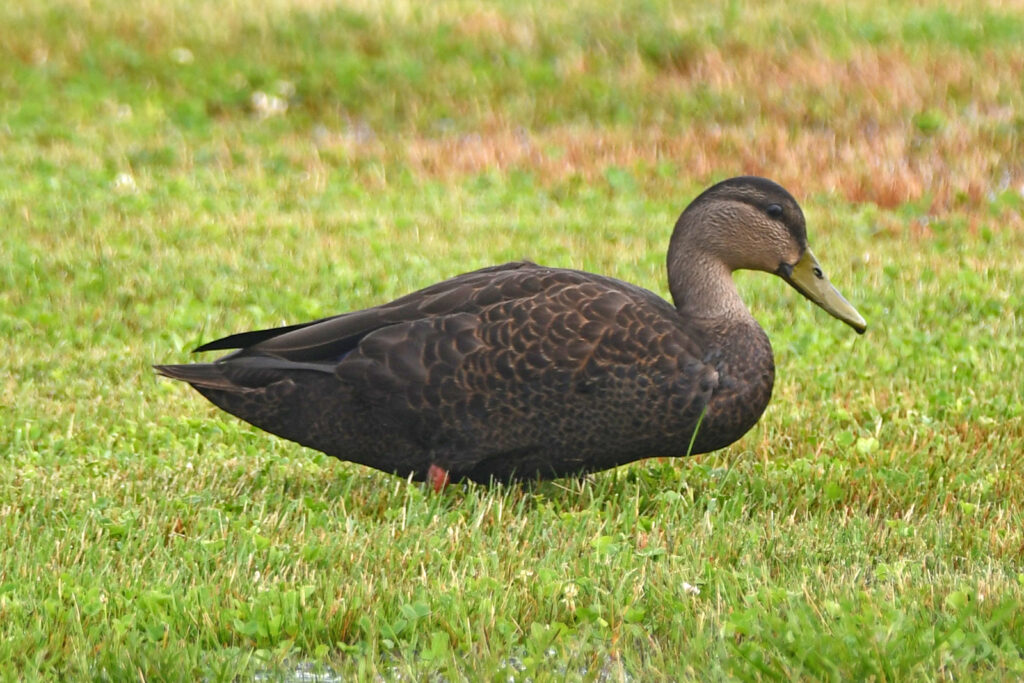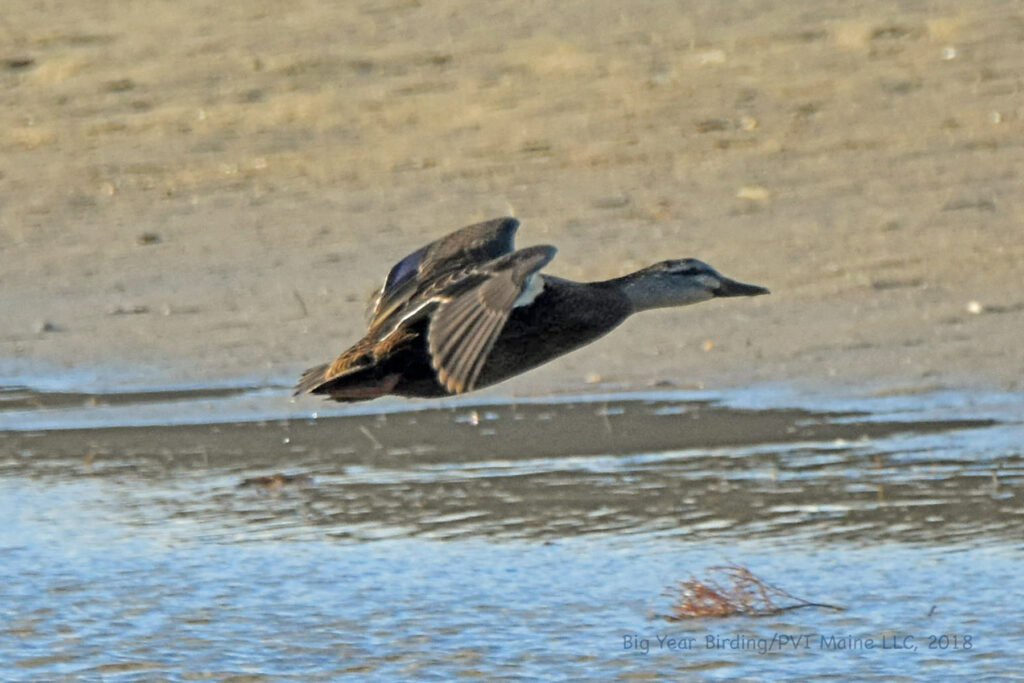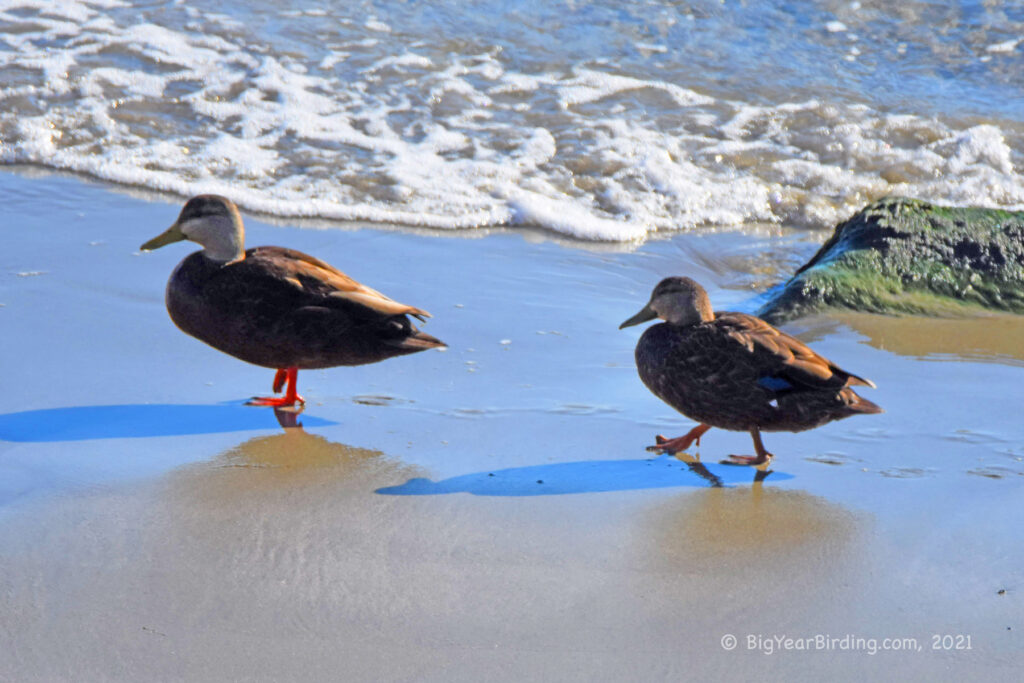
The American Black Duck (Anas rubripes) is a medium-sized dabbling duck that is found in North America. Adults typically measure between 20 and 28 inches in length and weigh between 1.6 and 3.5 pounds, with males generally larger than females. The American Black Duck has a dark brown body, with a lighter brown head and a greenish-black speculum (wing patch) that is bordered with white. They have a yellowish bill with a dark tip and a grayish-blue leg.

One of the distinguishing field marks of the American Black Duck is its dark brown body, which distinguishes it from the similar-looking Mallard, which has a green head and white ring around its neck. Additionally, the greenish-black speculum bordered with white is a distinctive field mark. In flight, the American Black Duck displays a white underwing and a darker upperwing.
The American Black Duck is a migratory species, with breeding populations found in the northeastern United States and eastern Canada. During the breeding season, they can be found in wetland habitats such as marshes, swamps, and ponds. In the winter, American Black Ducks migrate south, with some individuals traveling as far as Central America and the Caribbean. They are often found in coastal habitats such as estuaries, tidal flats, and salt marshes.
The American Black Duck is considered a game bird and is hunted for sport in many parts of North America. Habitat loss and hunting pressure have led to population declines in some areas, and the species is considered a conservation concern in Canada. Conservation efforts include protecting and restoring wetland habitats and implementing hunting regulations to limit harvest.

Overall, the American Black Duck is a distinctive and fascinating species that plays an important role in wetland ecosystems. With proper conservation efforts, it is hoped that this species will continue to thrive and contribute to the diversity of North America’s avian fauna.

